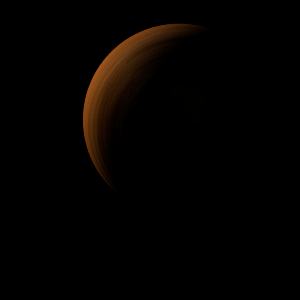|
|
Space Astro
|
Info for exoplanet "Ounao-gwengf"
| Scientific (actual) data |
|---|
| Name | GJ 674 b |
| Planet status | Confirmed |
| Mass sini | 0.04 |
| Radius | 1.13 |
| Orbital period | 4.6944 |
| Semi major axis | 0.039 |
| Orbit eccentricity | 0.07 |
| Angular distance | 0.00859 |
| Discovered | 2007 |
| Updated | 2019-06-13 |
| Omega | 0.5 |
| Tperi | 2453820 |
| K | 9.46 |
| Publication | Published in a refereed paper |
| Detection type | Radial Velocity |
| Mass measurement type | Radial Velocity |
| Radius measurement type | Theoretical |
| Star name | GJ 674 |
| Right ascension | 262.17° |
| Declination | -46.9° |
| Mag v | 9.38 |
| Star distance | 4.54 |
| Star metallicity | -0.28 |
| Star mass | 0.35 |
| Star sp type | M2.5 |
| Star age | 0.55 |
| Star temperature | 3600 |
| Wikipedia article | GJ 674 b |
Back
| |
| Fictional info (?) |
|---|
| Suggested name | Ounao-gwengf |
| Planet type | Hot planet |
| It has the densest atmosphere of any hot planets, consisting partly of ethane.
The outer atmosphere is visibly segregated into several bands at different latitudes, resulting in turbulence and storms along their interacting boundaries. |
| Atmosphere | Ethane | 78% |
| Neon | 17% |
| Hydrogen chloride | 1.4% |
| Molecular hydrogen | 1.2% |
| Hydrogen | 1.1% |
| Atmospheric pressure | 0.03 bar |
 |
| No known satellites |
| Google search for Ounao-gwengf |
|
Website by Joachim Michaelis
|
|
|
|